
EP PRE-ALGEBRA-STUDENTWORKS PLUS(1 YR.)
10th Edition
ISBN: 9780078947483
Author: GLENCOE
Publisher: MCGRAW-HILL HIGHER EDUCATION
expand_more
expand_more
format_list_bulleted
Question
Chapter 1.3, Problem 55SR
To determine
To translate: the given phrase into an algebraic expression.
Expert Solution & Answer
Answer to Problem 55SR
An algebraic expression is x+6
Explanation of Solution
Given:
Six feet shorter than the mountain’s height
Calculation:
Suppose the mountain height = x feet
6 more than
Algebraic expression:
x+6
Conclusion:
Thus, an algebraic expression is x+6
Chapter 1 Solutions
EP PRE-ALGEBRA-STUDENTWORKS PLUS(1 YR.)
Ch. 1.1 - Prob. 1ACYPCh. 1.1 - Prob. 1BCYPCh. 1.1 - Prob. 2ACYPCh. 1.1 - Prob. 2BCYPCh. 1.1 - Prob. 2CCYPCh. 1.1 - Prob. 2DCYPCh. 1.1 - Prob. 3CYPCh. 1.1 - Prob. 1CYUCh. 1.1 - Prob. 2CYUCh. 1.1 - Prob. 3CYU
Ch. 1.1 - Prob. 4CYUCh. 1.1 - Prob. 5CYUCh. 1.1 - Prob. 6CYUCh. 1.1 - Prob. 7CYUCh. 1.1 - Prob. 8CYUCh. 1.1 - Prob. 9CYUCh. 1.1 - Prob. 10CYUCh. 1.1 - Prob. 11CYUCh. 1.1 - Prob. 12PPSCh. 1.1 - Prob. 13PPSCh. 1.1 - Prob. 14PPSCh. 1.1 - Prob. 15PPSCh. 1.1 - Prob. 16PPSCh. 1.1 - Prob. 17PPSCh. 1.1 - Prob. 18PPSCh. 1.1 - Prob. 19PPSCh. 1.1 - Prob. 20PPSCh. 1.1 - Prob. 21PPSCh. 1.1 - Prob. 22PPSCh. 1.1 - Prob. 23PPSCh. 1.1 - Prob. 24PPSCh. 1.1 - Prob. 25PPSCh. 1.1 - Prob. 26PPSCh. 1.1 - Prob. 27PPSCh. 1.1 - Prob. 28PPSCh. 1.1 - Prob. 29PPSCh. 1.1 - Prob. 30PPSCh. 1.1 - Prob. 31PPSCh. 1.1 - Prob. 32PPSCh. 1.1 - Prob. 33PPSCh. 1.1 - Prob. 34HPCh. 1.1 - Prob. 35HPCh. 1.1 - Prob. 36HPCh. 1.1 - Prob. 37HPCh. 1.1 - Prob. 38HPCh. 1.1 - Prob. 39STPCh. 1.1 - Prob. 40STPCh. 1.1 - Prob. 41STPCh. 1.1 - Prob. 42STPCh. 1.2 - Prob. 1ACYPCh. 1.2 - Prob. 1BCYPCh. 1.2 - Prob. 2ACYPCh. 1.2 - Prob. 2BCYPCh. 1.2 - Prob. 3ACYPCh. 1.2 - Prob. 3BCYPCh. 1.2 - Prob. 3CCYPCh. 1.2 - Prob. 4CYPCh. 1.2 - Prob. 1CYUCh. 1.2 - Prob. 2CYUCh. 1.2 - Prob. 3CYUCh. 1.2 - Prob. 4CYUCh. 1.2 - Prob. 5CYUCh. 1.2 - Prob. 6CYUCh. 1.2 - Prob. 7CYUCh. 1.2 - Prob. 8CYUCh. 1.2 - Prob. 9CYUCh. 1.2 - Prob. 10CYUCh. 1.2 - Prob. 11CYUCh. 1.2 - Prob. 12PPSCh. 1.2 - Prob. 13PPSCh. 1.2 - Prob. 14PPSCh. 1.2 - Prob. 15PPSCh. 1.2 - Prob. 16PPSCh. 1.2 - Prob. 17PPSCh. 1.2 - Prob. 18PPSCh. 1.2 - Prob. 19PPSCh. 1.2 - Prob. 20PPSCh. 1.2 - Prob. 21PPSCh. 1.2 - Prob. 22PPSCh. 1.2 - Prob. 23PPSCh. 1.2 - Prob. 24PPSCh. 1.2 - Prob. 25PPSCh. 1.2 - Prob. 26PPSCh. 1.2 - Prob. 27PPSCh. 1.2 - Prob. 28PPSCh. 1.2 - Prob. 29PPSCh. 1.2 - Prob. 30PPSCh. 1.2 - Prob. 31PPSCh. 1.2 - Prob. 32PPSCh. 1.2 - Prob. 33PPSCh. 1.2 - Prob. 34PPSCh. 1.2 - Prob. 35PPSCh. 1.2 - Prob. 36PPSCh. 1.2 - Prob. 37PPSCh. 1.2 - Prob. 38PPSCh. 1.2 - Prob. 39PPSCh. 1.2 - Prob. 40PPSCh. 1.2 - Prob. 41HPCh. 1.2 - Prob. 42HPCh. 1.2 - Prob. 43HPCh. 1.2 - Prob. 44HPCh. 1.2 - Prob. 45STPCh. 1.2 - Prob. 46STPCh. 1.2 - Prob. 47STPCh. 1.2 - Prob. 48STPCh. 1.2 - Prob. 49SRCh. 1.2 - Prob. 50SRCh. 1.2 - Prob. 51SRCh. 1.2 - Prob. 52SRCh. 1.2 - Prob. 53SRCh. 1.2 - Prob. 54SRCh. 1.2 - Prob. 55SRCh. 1.2 - Prob. 56SRCh. 1.2 - Prob. 57SRCh. 1.2 - Prob. 58SRCh. 1.2 - Prob. 59SRCh. 1.2 - Prob. 60SRCh. 1.2 - Prob. 61SCh. 1.2 - Prob. 62SCh. 1.2 - Prob. 63SCh. 1.2 - Prob. 64SCh. 1.3 - Prob. 1CYPCh. 1.3 - Prob. 2ACYPCh. 1.3 - Prob. 2BCYPCh. 1.3 - Prob. 2CCYPCh. 1.3 - Prob. 2DCYPCh. 1.3 - Prob. 3ACYPCh. 1.3 - Prob. 3BCYPCh. 1.3 - Prob. 4CYPCh. 1.3 - Prob. 1CYUCh. 1.3 - Prob. 2CYUCh. 1.3 - Prob. 3CYUCh. 1.3 - Prob. 4CYUCh. 1.3 - Prob. 5CYUCh. 1.3 - Prob. 6CYUCh. 1.3 - Prob. 7CYUCh. 1.3 - Prob. 8CYUCh. 1.3 - Prob. 9CYUCh. 1.3 - Prob. 10CYUCh. 1.3 - Prob. 11CYUCh. 1.3 - Prob. 12CYUCh. 1.3 - Prob. 13CYUCh. 1.3 - Prob. 14CYUCh. 1.3 - Prob. 15PPSCh. 1.3 - Prob. 16PPSCh. 1.3 - Prob. 17PPSCh. 1.3 - Prob. 18PPSCh. 1.3 - Prob. 19PPSCh. 1.3 - Prob. 20PPSCh. 1.3 - Prob. 21PPSCh. 1.3 - Prob. 22PPSCh. 1.3 - Prob. 23PPSCh. 1.3 - Prob. 24PPSCh. 1.3 - Prob. 25PPSCh. 1.3 - Prob. 26PPSCh. 1.3 - Prob. 27PPSCh. 1.3 - Prob. 28PPSCh. 1.3 - Prob. 29PPSCh. 1.3 - Prob. 30PPSCh. 1.3 - Prob. 31PPSCh. 1.3 - Prob. 32PPSCh. 1.3 - Prob. 33PPSCh. 1.3 - Prob. 34PPSCh. 1.3 - Prob. 35PPSCh. 1.3 - Prob. 36PPSCh. 1.3 - Prob. 37PPSCh. 1.3 - Prob. 38PPSCh. 1.3 - Prob. 39PPSCh. 1.3 - Prob. 40PPSCh. 1.3 - Prob. 41PPSCh. 1.3 - Prob. 42PPSCh. 1.3 - Prob. 43PPSCh. 1.3 - Prob. 44HPCh. 1.3 - Prob. 45HPCh. 1.3 - Prob. 46HPCh. 1.3 - Prob. 47HPCh. 1.3 - Prob. 48HPCh. 1.3 - Prob. 49STPCh. 1.3 - Prob. 50STPCh. 1.3 - Prob. 51STPCh. 1.3 - Prob. 52STPCh. 1.3 - Prob. 53SRCh. 1.3 - Prob. 54SRCh. 1.3 - Prob. 55SRCh. 1.3 - Prob. 56SRCh. 1.3 - Prob. 57SRCh. 1.3 - Prob. 58SRCh. 1.3 - Prob. 59SRCh. 1.3 - Prob. 60SRCh. 1.3 - Prob. 61SRCh. 1.3 - Prob. 62SRCh. 1.3 - Prob. 63SRCh. 1.3 - Prob. 64SCh. 1.3 - Prob. 65SCh. 1.3 - Prob. 66SCh. 1.3 - Prob. 67SCh. 1.3 - Prob. 68SCh. 1.3 - Prob. 69SCh. 1.3 - Prob. 70SCh. 1.3 - Prob. 71SCh. 1.4 - Prob. 1ACYPCh. 1.4 - Prob. 1BCYPCh. 1.4 - Prob. 1CCYPCh. 1.4 - Prob. 1DCYPCh. 1.4 - Prob. 2ACYPCh. 1.4 - Prob. 2BCYPCh. 1.4 - Prob. 3CYPCh. 1.4 - Prob. 4ACYPCh. 1.4 - Prob. 4BCYPCh. 1.4 - Prob. 1CYUCh. 1.4 - Prob. 2CYUCh. 1.4 - Prob. 3CYUCh. 1.4 - Prob. 4CYUCh. 1.4 - Prob. 5CYUCh. 1.4 - Prob. 6CYUCh. 1.4 - Prob. 7CYUCh. 1.4 - Prob. 8CYUCh. 1.4 - Prob. 9CYUCh. 1.4 - Prob. 10CYUCh. 1.4 - Prob. 11CYUCh. 1.4 - Prob. 12PPSCh. 1.4 - Prob. 13PPSCh. 1.4 - Prob. 14PPSCh. 1.4 - Prob. 15PPSCh. 1.4 - Prob. 16PPSCh. 1.4 - Prob. 17PPSCh. 1.4 - Prob. 18PPSCh. 1.4 - Prob. 19PPSCh. 1.4 - Prob. 20PPSCh. 1.4 - Prob. 21PPSCh. 1.4 - Prob. 22PPSCh. 1.4 - Prob. 23PPSCh. 1.4 - Prob. 24PPSCh. 1.4 - Prob. 25PPSCh. 1.4 - Prob. 26PPSCh. 1.4 - Prob. 27PPSCh. 1.4 - Prob. 28PPSCh. 1.4 - Prob. 29PPSCh. 1.4 - Prob. 30PPSCh. 1.4 - Prob. 31PPSCh. 1.4 - Prob. 32PPSCh. 1.4 - Prob. 33PPSCh. 1.4 - Prob. 34PPSCh. 1.4 - Prob. 35PPSCh. 1.4 - Prob. 36HPCh. 1.4 - Prob. 37HPCh. 1.4 - Prob. 38HPCh. 1.4 - Prob. 39HPCh. 1.4 - Prob. 40HPCh. 1.4 - Prob. 41STPCh. 1.4 - Prob. 42STPCh. 1.4 - Prob. 43STPCh. 1.4 - Prob. 44STPCh. 1.4 - Prob. 45SRCh. 1.4 - Prob. 46SRCh. 1.4 - Prob. 47SRCh. 1.4 - Prob. 48SRCh. 1.4 - Prob. 49SRCh. 1.4 - Prob. 50SRCh. 1.4 - Prob. 51SRCh. 1.4 - Prob. 52SCh. 1.4 - Prob. 53SCh. 1.4 - Prob. 54SCh. 1.4 - Prob. 55SCh. 1.4 - Prob. 56SCh. 1.4 - Prob. 57SCh. 1.5 - Prob. 1CYPCh. 1.5 - Prob. 2ACYPCh. 1.5 - Prob. 2BCYPCh. 1.5 - Prob. 1CYUCh. 1.5 - Prob. 2CYUCh. 1.5 - Prob. 3CYUCh. 1.5 - Prob. 4PPSCh. 1.5 - Prob. 5PPSCh. 1.5 - Prob. 6PPSCh. 1.5 - Prob. 7PPSCh. 1.5 - Prob. 8PPSCh. 1.5 - Prob. 9PPSCh. 1.5 - Prob. 10PPSCh. 1.5 - Prob. 11PPSCh. 1.5 - Prob. 12HPCh. 1.5 - Prob. 13HPCh. 1.5 - Prob. 14HPCh. 1.5 - Prob. 15STPCh. 1.5 - Prob. 16STPCh. 1.5 - Prob. 17STPCh. 1.5 - Prob. 18STPCh. 1.5 - Prob. 19SRCh. 1.5 - Prob. 20SRCh. 1.5 - Prob. 21SRCh. 1.5 - Prob. 22SRCh. 1.5 - Prob. 23SRCh. 1.5 - Prob. 24SRCh. 1.5 - Prob. 25SRCh. 1.5 - Prob. 26SRCh. 1.5 - Prob. 27SRCh. 1.5 - Prob. 28SRCh. 1.5 - Prob. 29SRCh. 1.5 - Prob. 30SRCh. 1.5 - Prob. 31SRCh. 1.5 - Prob. 32SCh. 1.5 - Prob. 33SCh. 1.5 - Prob. 34SCh. 1.5 - Prob. 35SCh. 1.6 - Prob. 1CYPCh. 1.6 - Prob. 2CYPCh. 1.6 - Prob. 3ACYPCh. 1.6 - Prob. 3BCYPCh. 1.6 - Prob. 3CCYPCh. 1.6 - Prob. 1CYUCh. 1.6 - Prob. 2PPSCh. 1.6 - Prob. 3PPSCh. 1.6 - Prob. 4PPSCh. 1.6 - Prob. 5PPSCh. 1.6 - Prob. 6PPSCh. 1.6 - Prob. 7PPSCh. 1.6 - Prob. 8PPSCh. 1.6 - Prob. 9PPSCh. 1.6 - Prob. 10PPSCh. 1.6 - Prob. 11PPSCh. 1.6 - Prob. 12PPSCh. 1.6 - Prob. 13PPSCh. 1.6 - Prob. 14PPSCh. 1.6 - Prob. 15PPSCh. 1.6 - Prob. 16HPCh. 1.6 - Prob. 17HPCh. 1.6 - Prob. 18HPCh. 1.6 - Prob. 19HPCh. 1.6 - Prob. 20HPCh. 1.6 - Prob. 21HPCh. 1.6 - Prob. 22HPCh. 1.6 - Prob. 23STPCh. 1.6 - Prob. 24STPCh. 1.6 - Prob. 25STPCh. 1.6 - Prob. 26STPCh. 1.6 - Prob. 27SRCh. 1.6 - Prob. 28SRCh. 1.6 - Prob. 29SRCh. 1.6 - Prob. 30SRCh. 1.6 - Prob. 31SRCh. 1.6 - Prob. 32SRCh. 1.6 - Prob. 33SRCh. 1.6 - Prob. 34SCh. 1.6 - Prob. 35SCh. 1.6 - Prob. 36SCh. 1.6 - Prob. 37SCh. 1.6 - Prob. 38SCh. 1.6 - Prob. 39SCh. 1 - Prob. 1QCCh. 1 - Prob. 2QCCh. 1 - Prob. 3QCCh. 1 - Prob. 4QCCh. 1 - Prob. 5QCCh. 1 - Prob. 6QCCh. 1 - Prob. 7QCCh. 1 - Prob. 8QCCh. 1 - Prob. 9QCCh. 1 - Prob. 10QCCh. 1 - Prob. 11QCCh. 1 - Prob. 12QCCh. 1 - Prob. 13QCCh. 1 - Prob. 14QCCh. 1 - Prob. 15QCCh. 1 - Prob. 16QCCh. 1 - Prob. 17QCCh. 1 - Prob. 18QCCh. 1 - Prob. 19QCCh. 1 - Prob. 1MCQCh. 1 - Prob. 2MCQCh. 1 - Prob. 3MCQCh. 1 - Prob. 4MCQCh. 1 - Prob. 5MCQCh. 1 - Prob. 6MCQCh. 1 - Prob. 7MCQCh. 1 - Prob. 8MCQCh. 1 - Prob. 9MCQCh. 1 - Prob. 10MCQCh. 1 - Prob. 11MCQCh. 1 - Prob. 12MCQCh. 1 - Prob. 13MCQCh. 1 - Prob. 14MCQCh. 1 - Prob. 15MCQCh. 1 - Prob. 16MCQCh. 1 - Prob. 17MCQCh. 1 - Prob. 18MCQCh. 1 - Prob. 19MCQCh. 1 - Prob. 20MCQCh. 1 - Prob. 21MCQCh. 1 - Prob. 22MCQCh. 1 - Prob. 23MCQCh. 1 - Prob. 24MCQCh. 1 - Prob. 25MCQCh. 1 - Prob. 1SGRCh. 1 - Prob. 2SGRCh. 1 - Prob. 3SGRCh. 1 - Prob. 4SGRCh. 1 - Prob. 5SGRCh. 1 - Prob. 6SGRCh. 1 - Prob. 7SGRCh. 1 - Prob. 8SGRCh. 1 - Prob. 9SGRCh. 1 - Prob. 10SGRCh. 1 - Prob. 11SGRCh. 1 - Prob. 12SGRCh. 1 - Prob. 13SGRCh. 1 - Prob. 14SGRCh. 1 - Prob. 15SGRCh. 1 - Prob. 16SGRCh. 1 - Prob. 17SGRCh. 1 - Prob. 18SGRCh. 1 - Prob. 19SGRCh. 1 - Prob. 20SGRCh. 1 - Prob. 21SGRCh. 1 - Prob. 22SGRCh. 1 - Prob. 23SGRCh. 1 - Prob. 24SGRCh. 1 - Prob. 25SGRCh. 1 - Prob. 26SGRCh. 1 - Prob. 27SGRCh. 1 - Prob. 28SGRCh. 1 - Prob. 29SGRCh. 1 - Prob. 30SGRCh. 1 - Prob. 1PTCh. 1 - Prob. 2PTCh. 1 - Prob. 3PTCh. 1 - Prob. 4PTCh. 1 - Prob. 5PTCh. 1 - Prob. 6PTCh. 1 - Prob. 7PTCh. 1 - Prob. 8PTCh. 1 - Prob. 9PTCh. 1 - Prob. 10PTCh. 1 - Prob. 11PTCh. 1 - Prob. 12PTCh. 1 - Prob. 13PTCh. 1 - Prob. 14PTCh. 1 - Prob. 15PTCh. 1 - Prob. 16PTCh. 1 - Prob. 17PTCh. 1 - Prob. 18PTCh. 1 - Prob. 19PTCh. 1 - Prob. 20PTCh. 1 - Prob. 21PTCh. 1 - Prob. 22PTCh. 1 - Prob. 23PTCh. 1 - Prob. 24PTCh. 1 - Prob. 25PTCh. 1 - Prob. 1ECh. 1 - Prob. 2ECh. 1 - Prob. 3ECh. 1 - Prob. 4ECh. 1 - Prob. 1STPCh. 1 - Prob. 2STPCh. 1 - Prob. 3STPCh. 1 - Prob. 4STPCh. 1 - Prob. 5STPCh. 1 - Prob. 6STPCh. 1 - Prob. 7STPCh. 1 - Prob. 8STPCh. 1 - Prob. 9STPCh. 1 - Prob. 10STPCh. 1 - Prob. 11STP
Additional Math Textbook Solutions
Find more solutions based on key concepts
A categorical variable has three categories, with the following frequencies of occurrence: a. Compute the perce...
Basic Business Statistics, Student Value Edition
Disks/washers about the y-axis Let R be the region bounded by the following curves. Use the disk or washer meth...
Calculus: Early Transcendentals (2nd Edition)
Houses A real estate agent claims that all things being equal, houses with swimming pools tend to sell for less...
Introductory Statistics
ASSESSMENT Find the first five terms in sequences with the following nth terms. a. n2+2 b. 5n+1 c. 10n1 d. 3n2 ...
A Problem Solving Approach To Mathematics For Elementary School Teachers (13th Edition)
1. How many solutions are there to ax + b = 0 with ?
College Algebra with Modeling & Visualization (5th Edition)
TRY IT YOURSELF 1
Find the mean of the points scored by the 51 winning teams listed on page 39.
Elementary Statistics: Picturing the World (7th Edition)
Knowledge Booster
Learn more about
Need a deep-dive on the concept behind this application? Look no further. Learn more about this topic, algebra and related others by exploring similar questions and additional content below.Similar questions
- 4) A researcher gathered data on the amount of time students spent studying per week. Given the following frequency distribution, fill in the relative and cumulative frequency. Hours per week: at least Frequency Relative Frequency Cumulative Relative Frequency 0 but less than 2 4 2 but less than 4 15 4 but less than 6 41 6 but less than 8 20 8 but less than 10 7 10 or more 3 a) What percentage of students study less than 6 hours per week?arrow_forwardoptions are greater than less than or about the same asarrow_forwardA candy machine contains over \[1{,}000\] pieces of candy, \[30\%\] of which are blue. Customers get an SRS of \[15\] candies in a purchase. Let \[X=\] the number of blue candies that a random customer gets in a purchase. Find the mean and standard deviation of \[X\].You may round your answers to the nearest tenth.arrow_forward
- A television show tests the abilities of alleged psychics by presenting contestants with a set of \[4\] cards placed upside down, \[1\] of which has a star printed on it. Each contestant attempts to identify which card has the star on it for a series of \[50\] trials. Assuming that the contestants are purely guessing, what are the mean and standard deviation of the number of trials where the contestant guesses correctly?You may round your answers to the nearest tenth.arrow_forwardA television show tests the abilities of alleged psychics by presenting contestants with a set of \[4\] cards placed upside down, \[1\] of which has a star printed on it. Each contestant attempts to identify which card has the star on it for a series of \[50\] trials. Assuming that the contestants are purely guessing, what are the mean and standard deviation of the number of trials where the contestant guesses correctly?You may round your answers to the nearest tenth.arrow_forwardA large fast-food chain runs a promotion where \[1\]-in-\[4\] boxes of french fries include a coupon for a free box of french fries. Suppose that some location sells \[100\] of these boxes of fries per day. Let \[X=\] the number of coupons won per day. Find the mean and standard deviation of \[X\].You may round your answers to the nearest tenth.arrow_forward
- A roulette wheel has \[38\] slots, of which \[18\] are red, \[18\] are black, and \[2\] are green. In each round of the game, a ball is tossed in the spinning wheel and lands in a random slot. Suppose we watch \[7\] rounds of this game, and let \[R\] represent the number of rounds where the ball lands in a red slot. Which of the following would find \[P(R=3)\]?arrow_forwardA small college has 800students, 10% of which are left-handed. Suppose they take an SRS of 8students. Let [L=] the number of left-handed students in the sample. Which of the following would find [P(L=2)]?arrow_forward[2 01 3. (12 pts) Let A = 1 1 and b = 1 L2 1] 213 [2] (1) (2) Use the Gram-Schmidt process to find an orthonormal basis for the column space of A. Factor A into a product QR, where Q has an orthonormal set of column vectors and R is upper triangular. (3) Solve the least squares problem Ax = b.arrow_forward
- 22.) Mr. Vedrani has a pool with a deck built around it. The equation (2x+14)(2x+19) = 650 represents the relationship of the side lengths (in feet) of the entire pool area (in square feet). a.) If 350 represents the area of the pool and deck area, what do the expressions (2x+14) and (2x+19) each represent? b.) Using graphing technology, find x, the width of the deck around the pool. If necessary, round to the nearest tenth. x=arrow_forwardHow do I get common factors?arrow_forwardProblem #1 You apply to two different graduate programs at a specific university: one in geology and one in environmental sciences. Let P(G) = 0.8, where P(G) represents the probability that you get accepted into the geology program. Let P(E) = 0.72, where P(E) represents the probability that you get accepted into the environmental sciences program. Let P(GE) = 0.65. a). Create a Venn diagram that represents this information. b). First, calculate P(GUE). Then, using complete sentence, interpret what P(GUE) represents in the context of this problem.arrow_forward
arrow_back_ios
SEE MORE QUESTIONS
arrow_forward_ios
Recommended textbooks for you
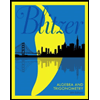 Algebra and Trigonometry (6th Edition)AlgebraISBN:9780134463216Author:Robert F. BlitzerPublisher:PEARSON
Algebra and Trigonometry (6th Edition)AlgebraISBN:9780134463216Author:Robert F. BlitzerPublisher:PEARSON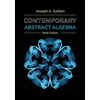 Contemporary Abstract AlgebraAlgebraISBN:9781305657960Author:Joseph GallianPublisher:Cengage Learning
Contemporary Abstract AlgebraAlgebraISBN:9781305657960Author:Joseph GallianPublisher:Cengage Learning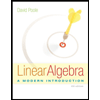 Linear Algebra: A Modern IntroductionAlgebraISBN:9781285463247Author:David PoolePublisher:Cengage Learning
Linear Algebra: A Modern IntroductionAlgebraISBN:9781285463247Author:David PoolePublisher:Cengage Learning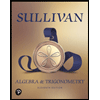 Algebra And Trigonometry (11th Edition)AlgebraISBN:9780135163078Author:Michael SullivanPublisher:PEARSON
Algebra And Trigonometry (11th Edition)AlgebraISBN:9780135163078Author:Michael SullivanPublisher:PEARSON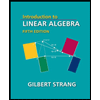 Introduction to Linear Algebra, Fifth EditionAlgebraISBN:9780980232776Author:Gilbert StrangPublisher:Wellesley-Cambridge Press
Introduction to Linear Algebra, Fifth EditionAlgebraISBN:9780980232776Author:Gilbert StrangPublisher:Wellesley-Cambridge Press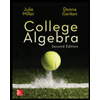 College Algebra (Collegiate Math)AlgebraISBN:9780077836344Author:Julie Miller, Donna GerkenPublisher:McGraw-Hill Education
College Algebra (Collegiate Math)AlgebraISBN:9780077836344Author:Julie Miller, Donna GerkenPublisher:McGraw-Hill Education

Algebra and Trigonometry (6th Edition)
Algebra
ISBN:9780134463216
Author:Robert F. Blitzer
Publisher:PEARSON

Contemporary Abstract Algebra
Algebra
ISBN:9781305657960
Author:Joseph Gallian
Publisher:Cengage Learning

Linear Algebra: A Modern Introduction
Algebra
ISBN:9781285463247
Author:David Poole
Publisher:Cengage Learning

Algebra And Trigonometry (11th Edition)
Algebra
ISBN:9780135163078
Author:Michael Sullivan
Publisher:PEARSON

Introduction to Linear Algebra, Fifth Edition
Algebra
ISBN:9780980232776
Author:Gilbert Strang
Publisher:Wellesley-Cambridge Press

College Algebra (Collegiate Math)
Algebra
ISBN:9780077836344
Author:Julie Miller, Donna Gerken
Publisher:McGraw-Hill Education
Quadrilaterals: Missing Angles and Sides; Author: rhornfeck;https://www.youtube.com/watch?v=knVj1O0L2TM;License: Standard YouTube License, CC-BY
STD IX | State Board | Types of Quadrilateral; Author: Robomate;https://www.youtube.com/watch?v=wh0KQ4UB0EU;License: Standard YouTube License, CC-BY